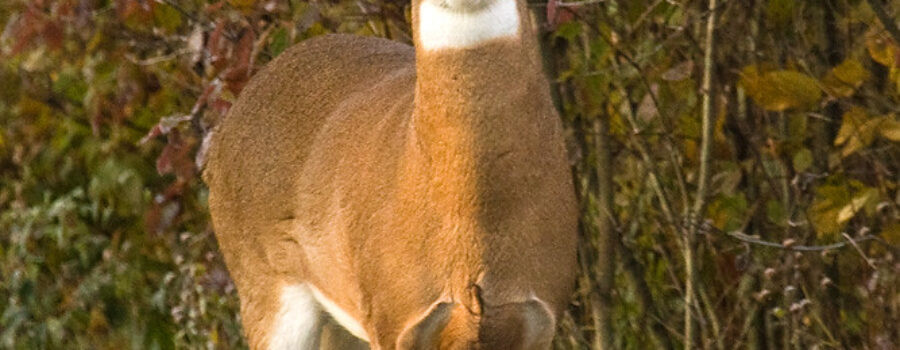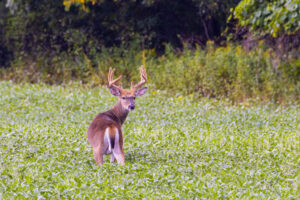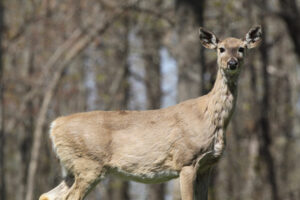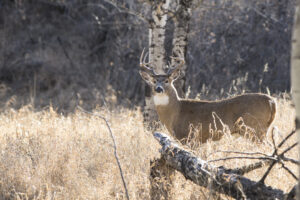Whitetail deer are one of the most popular game animals in North America, and many hunters are interested in identifying mature bucks. Mature bucks are considered to be the most desirable targets due to their trophy-sized antlers and their reputation as wily and elusive animals. In this article, we will discuss some of the key characteristics that can be used to tell if a whitetail buck is mature.
Antler Development
One of the most obvious signs of a mature whitetail buck is the development of its antlers. As whitetail bucks grow older, they typically grow larger and more complex antlers. Mature bucks typically have a minimum of four points on each antler and the antlers will have a more symmetrical shape. In addition, mature bucks often have heavier antlers with thicker beams and a more massive appearance.

It is important to note that the size and complexity of a whitetail buck’s antlers can vary greatly depending on a number of factors, including genetics, age, diet, and habitat. However, in general, the antlers of a mature buck will be significantly larger and more developed than those of a younger buck.
Antler size and complexity can be used as a rough guide to the age and maturity of a whitetail buck, but there are no hard and fast rules. For example, some mature bucks may have relatively small antlers, while others may have massive antlers that are still growing and developing. To get a more accurate idea of the age and maturity of a whitetail buck, it is best to look at other physical characteristics in addition to its antlers.
Body Size and Proportions
Another way to tell if a whitetail buck is mature is to look at its body size and proportions. Mature bucks are typically larger than younger bucks and have a more muscular and developed appearance. The neck of a mature buck is also thicker and more pronounced, and the chest is wider. Additionally, mature bucks will often have a more rounded and pronounced rump.
The body size and proportions of a whitetail buck can also be influenced by a number of factors, including genetics, diet, and habitat. However, in general, a mature buck will have a larger, more muscular, and more developed appearance than a younger buck.
Track and Trail Sign
The tracks and trail sign left by a whitetail buck can also provide clues as to its age and maturity. Mature bucks typically have larger hooves and will leave more distinct tracks. In addition, mature bucks often leave a more pronounced trail due to their heavier weight and more developed muscles. The trail of a mature buck may also show signs of being well-used, with well-worn paths leading to and from feeding and bedding areas.
Tracks and trail sign can be a useful tool for determining the age and maturity of a whitetail buck, but they are not foolproof. For example, the tracks of a mature buck can be difficult to distinguish from those of a younger buck if the ground is soft or covered in snow. In addition, the tracks of a mature buck may be less distinct if it is walking in an area with a lot of other deer or if it is using a well-used game trail.

Behavior and Habits
Finally, the behavior and habits of a whitetail buck can provide clues as to its age and maturity. Mature bucks are often more cautious and elusive than younger bucks, and will typically avoid open areas and areas with heavy human activity. Mature bucks are also more likely to have established territories and will defend them from other bucks. They are generally more solitary, and may only be seen with does during the breeding season. Mature bucks also tend to be more nocturnal and will often only move during low-light conditions, such as dawn and dusk. They are more likely to have well-established feeding and bedding areas and may return to these areas regularly. Mature bucks are also more likely to be more vocal, especially during the breeding season, when they may be heard grunting or rattling their antlers.
In contrast, younger bucks may be more active during daylight hours and may be more likely to be seen in open areas. They may also be more likely to be found in groups, and are generally less solitary than mature bucks. Younger bucks also tend to have less established feeding and bedding areas and may be less vocal.
It is important to note that the behavior and habits of a whitetail buck can vary greatly depending on a number of factors, including the time of year, the presence of other deer, and the specific habitat conditions. However, in general, the behavior and habits of a mature buck will be more predictable and consistent than those of a younger buck.
Conclusion
In conclusion, there are several key characteristics that can be used to tell if a whitetail buck is mature. These include antler development, body size and proportions, track and trail sign, and behavior and habits. While no single characteristic can definitively determine the age and maturity of a whitetail buck, by considering several of these factors, hunters can get a better idea of whether a buck is mature and, therefore, a desirable target.





Leave a Reply
Your email is safe with us.